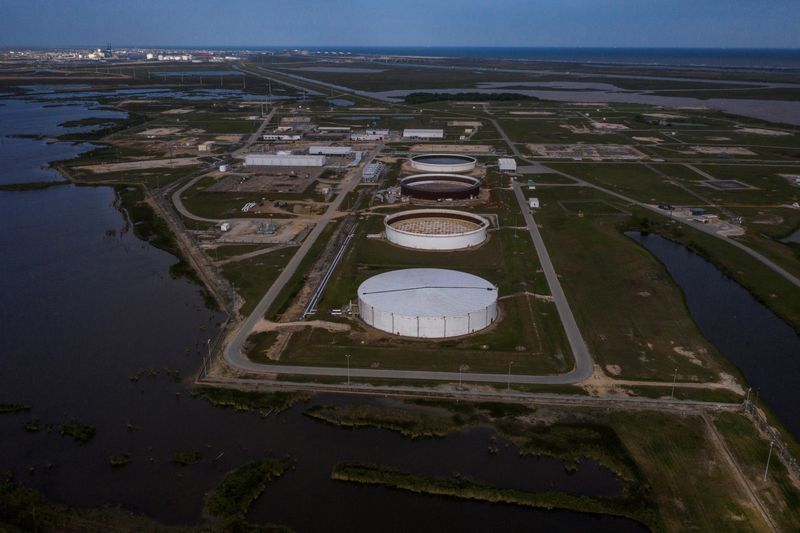Commodities
US speeds up purchasing for Strategic Petroleum Reserve as oil prices dip

By Timothy Gardner
WASHINGTON (Reuters) -President Joe Biden’s administration said on Friday it has increased purchasing of to replenish the Strategic Petroleum Reserve following its historic sale from the stockpile in 2022.
The Department of Energy on Friday issued two solicitations to buy a combined 6 million barrels of crude for delivery to its Bayou Choctaw site in Louisiana from September through December.
If those offers and previously announced ones are fulfilled, the department’s purchasing rate would increase to about 4.5 million barrels per month for September, October and November from about 3 million barrels now.
Energy Secretary Jennifer Granholm said in an exclusive interview on Tuesday that the department could speed replenishment of the SPR this year.
The SPR is stored at four sites on the coasts of Texas and Louisiana, and two of those have been undergoing maintenance, slowing purchases.
“All four sites will be back up by the end of the year, so one could imagine that pace would pick up, depending on the market,” Granholm said.
The Biden administration in 2022 announced a record sale of 180 million barrels from the SPR after Russia’s invasion of Ukraine. The move was an effort to control gasoline prices that spiked to more than $5.00 a gallon. But it also reduced the SPR to the lowest in 40 years.
The department said it will look for more ways to replenish the reserve, depending on the market. The DOE wants to buy oil for the reserve at about $79 a barrel. West Texas Intermediate crude futures were well below that at about $75 on Friday, falling for a third straight week on concerns about demand.

“At a time of relative crude weakness, the department is adding 50,000 barrels per day to SPR demand,” to 150,000 bpd for the reserve, equal to about the demand of a medium-size U.S. refinery, said Kevin Book, an analyst at ClearView Energy Partners.
The DOE this year moved to a direct purchase strategy of oil for the reserve instead of basing the purchasing price on an index. That and the completion of maintenance at Bayou Choctaw has helped it buy 38.6 million barrels of oil at an average of $77 per barrel, it said.
Commodities
Oil prices rise; U.S. crude inventories plunge, Russia-Ukraine truce eyed
Commodities
India’s Reliance to stop buying Venezuelan oil over US tariffs, sources say
Commodities
Oil prices climb on Venezuela supply worries

 Forex3 years ago
Forex3 years agoForex Today: the dollar is gaining strength amid gloomy sentiment at the start of the Fed’s week

 Forex3 years ago
Forex3 years agoUnbiased review of Pocket Option broker

 Forex3 years ago
Forex3 years agoDollar to pound sterling exchange rate today: Pound plummeted to its lowest since 1985

 Forex3 years ago
Forex3 years agoHow is the Australian dollar doing today?

 Cryptocurrency3 years ago
Cryptocurrency3 years agoWhat happened in the crypto market – current events today

 World3 years ago
World3 years agoWhy are modern video games an art form?

 Commodities3 years ago
Commodities3 years agoCopper continues to fall in price on expectations of lower demand in China

 Economy3 years ago
Economy3 years agoCrude oil tankers double in price due to EU anti-Russian sanctions























